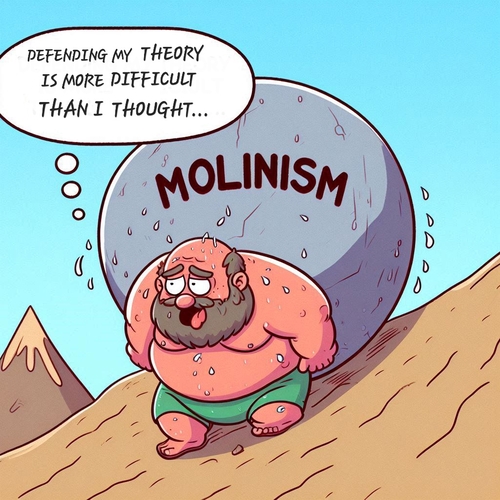The Woodpecker’s Design: How Nature’s Headbanger Defies Evolution
Imagine a bird that slams its head against solid wood 20 times per second, enduring impacts of 1,200 G-forces—the force could cause severe concussions or death in us, human beings. Yet the woodpecker does this thousands of times daily without injury. How? The answer lies in an incredible set of specialised features that work together in perfect harmony. While evolutionists claim these features developed gradually through random mutations and natural selection, the woodpecker’s remarkable design presents a significant challenge to evolutionary explanation and points convincingly toward intelligent design.
THE WOODPECKER’S DESIGN: REMARKABLE SPECIALISED FEATURES
Woodpeckers possess not just one but multiple specialised adaptations that allow them to perform their unique feeding behaviour:
- Reinforced Skull Structure: Unlike other birds, woodpeckers have a specialized spongy bone between their beak and skull that acts as a shock absorber, distributing impact forces away from the brain.
- Specialised Tongue: Most woodpeckers possess an extraordinarily long tongue (up to 4 inches) that wraps completely around the skull when retracted, anchoring at the nostril or in some species, the eye socket. This hyoid apparatus provides both stability during impact and the ability to extract insects from deep within trees.
- Unique Tail Feathers: Woodpeckers have stiff, reinforced tail feathers that act as a third leg, creating a tripod effect with their feet to stabilize them during powerful pecking.
- Special Eyelids: Woodpeckers have a third eyelid (nictitating membrane) that closes milliseconds before each impact, protecting their eyes while simultaneously keeping them from popping out of their sockets due to the extreme forces.
- Chisel-like Beak: Their beaks are self-sharpening and have layers of differing densities that distribute impact forces and prevent fracturing.
THE CHALLENGE OF IRREDUCIBLE COMPLEXITY
These features represent what biochemist Michael Behe termed “irreducible complexity”—a single system composed of several interacting parts where the removal of any one part causes the system to cease functioning. Consider the implications:
- Without the shock-absorbing skull, the woodpecker would suffer brain damage.
- Without the specialised tongue structure, it couldn’t extract the insects it needs for survival.
- Without the stiff tail feathers, it would lack stability for effective pecking.
- Without special eyelids, its eyes would be damaged during feeding.
The evolutionary challenge becomes evident: what use is a partially developed shock-absorbing skull if the specialised beak hasn’t yet evolved? How would a woodpecker survive with a partially elongated tongue but without the cranial structure to house it? These features would need to develop simultaneously—a scenario that strains evolutionary explanations.
THE MATHEMATICAL IMPROBABILITY ARGUMENT
The probability of multiple, precise genetic mutations occurring simultaneously through random processes is mathematically improbable. Studies on mutation rates suggest that beneficial mutations are exceedingly rare—approximately 1 in 10^6 mutations. For multiple beneficial mutations to occur simultaneously in the same organism, the probability becomes astronomically small.
Dr. John Sanford, a geneticist formerly at Cornell University, has calculated the rate at which beneficial mutations would need to be fixed in a population to account for the woodpecker’s specialised features vastly exceeds what is biologically possible, even given the proposed evolutionary timescale.
THE CHALLENGE FROM THE FOSSIL RECORD
If woodpeckers evolved gradually from non-woodpecker ancestors, we should find transitional fossils showing partial development of these specialised traits. Yet the fossil record reveals fully-formed woodpeckers dating back to their first appearance, with no clear transitional forms demonstrating the development of their unique adaptations.
The earliest known woodpecker fossils already display the distinctive anatomical features associated with modern woodpeckers. This pattern of stasis (remaining unchanged) is precisely what we’d expect from a creation model, not an evolutionary one.
THE WOODPECKER’S DESIGN: ADDRESSING COMMON EVOLUTIONARY COUNTERARGUMENTS
Evolutionists often invoke “co-option”—the idea that features evolved for one purpose were later repurposed for woodpecker-specific functions. However, this fails to address the integrated nature of woodpecker adaptations. Each feature requires precise coordination with others. The hyoid apparatus (the woodpecker’s tongue system) isn’t merely repurposed; it’s uniquely configured to work with the skull structure in a way not seen in any potential ancestor.
Some suggest incremental changes provided incremental benefits, but this ignores the interdependence of woodpecker features. A partially elongated tongue without the skull structure to accommodate it would be maladaptive, not beneficial.
THE DESIGN INFERENCE
When we observe systems with multiple, specialised, interdependent parts working together for a specific function, we reasonably infer design. Engineers recognize that systems exhibiting irreducible complexity, precise specifications, and multiple coordinated features are hallmarks of intentional design, not random processes.
The woodpecker demonstrates all these characteristics. Its features display purpose, coordination, and efficiency—exactly what we expect from designed systems. As William Dembski’s design filter would indicate, the woodpecker’s features are both complex and specified in a way that points to intelligent causation rather than chance or natural law.
CONCLUSION: THE WOODPECKER’S DESIGN
The woodpecker is a powerful challenge to evolutionary theory. Its integrated features work together in ways that defy gradual evolutionary explanations. From its shock-absorbing skull to its wrapped tongue, from its reinforced tail to its protective eyelids—each component functions as part of a beautifully coordinated system that bears the unmistakable hallmarks of design.
While evolution struggles to account for such integrated complexity, intelligent design offers a more reasonable explanation: the woodpecker was designed with purpose, its features intentionally crafted to work together. Rather than accepting evolutionary narratives that require implausible scenarios and missing evidence, perhaps it’s time to follow where the evidence actually leads—toward the recognition of design in nature.
The woodpecker doesn’t just knock on wood; It knocks on the door of our understanding, inviting us to consider a designer behind nature’s most remarkable features.
THE WOODPECKER’S DESIGN: RELATED FAQs
How do woodpeckers avoid getting headaches from constant pecking? Woodpeckers possess specialised cerebrospinal fluid that works as an additional cushioning system, helping to absorb and distribute impact forces away from the brain. This fluid works in conjunction with their unique skull structure to create a complete shock-absorption system that prevents brain trauma and headaches—a perfect example of integrated design rather than random development. Both components would need to be present simultaneously for effective protection.
- What other creatures demonstrate irreducible complexity similar to woodpeckers? The bombardier beetle is a classic example, with its explosive defence mechanism requiring precisely coordinated chambers, enzymes, and inhibitors—all working together to prevent self-destruction. The giraffe’s cardiovascular system, with its specialized heart, elastic arteries, and one-way valves to prevent blood pooling when they lower their heads, represents another irreducibly complex system. The bacterial flagellum, with its intricate motor-like structure requiring over 40 precisely arranged protein parts, has become an iconic example of design in microbiology.
- If woodpeckers were designed, why do some species become extinct? Design doesn’t imply immortality or invulnerability to environmental changes. The original created kinds were designed with genetic variability allowing adaptation within limits, but this doesn’t prevent extinction when environments change drastically or when human activity disrupts habitats. Extinction is consistent with a biblical worldview that describes a perfect creation followed by degradation due to sin and the global flood.
How do creationists explain similarities between woodpeckers and other birds? Similarities between woodpeckers and other birds reflect common design principles rather than common ancestry. Just as human engineers reuse successful design elements across different machines, the Creator efficiently implemented similar basic structures (like beaks, wings, and feathers) while adding specialised features for specific functions. This pattern of similarity with specialization is precisely what we would expect from an intelligent designer.
- Have scientists attempted to replicate woodpecker shock-absorption technology? Engineers have indeed studied woodpecker design for biomimicry applications, developing woodpecker-inspired shock absorbers for electronics, protective sports equipment, and even space vehicle components. The fact that intelligent human engineers must carefully study and deliberately implement these features demonstrates that such systems require intelligence rather than random processes. The woodpecker’s design has inspired multiple patents—a testament to the sophistication of its engineering.
- How do young woodpeckers learn to peck without injuring themselves? Young woodpeckers are born with their specialised anatomical features already in place, not developing them through practice. They begin with softer pecking on less dense surfaces, gradually building up to more forceful strikes as they develop physically. This developmental sequence demonstrates innate, programmed behaviour rather than learned adaptation, pointing to an intelligent programmer rather than environmental pressures randomly shaping their behaviour.
What would happen if woodpeckers suddenly lost their specialised features? If woodpeckers suddenly lost their specialised features, they’d suffer immediate brain damage, eye injuries, and feeding inability, leading to rapid extinction. This catastrophic outcome illustrates the “all-or-nothing” nature of irreducibly complex systems. Evolutionary processes cannot account for the synchronised development of multiple interdependent features when each feature alone provides no survival advantage and partial development would be actively harmful.
THE WOODPECKER’S DESIGN: OUR RELATED POSTS
Editor's Pick

Did Joseph Sin in Marrying an Egyptian?
It’s a troubling question: if God forbade His people from foreign alliances, why was Joseph’s marriage to an Egyptian not [...]

Jacob’s Ladder: How Jesus Bridges Earth and Heaven
THE GOSPEL IN GENESIS 28... A stairway to heaven—humanity has always dreamt of one since the Fall. Every religion offers [...]

In the World But Not Of It: What John 17:14-16 Really Means
Scrolling through social media, we’re bombarded by voices shouting for our allegiance—politics, trends, ideologies. As Christians, we feel the tension: [...]

Is Molinism Biblical? Reformed Challenges to Middle Knowledge
In a world craving autonomy, does God truly reign supreme, or does He negotiate with human choices? The question lies [...]

Does the Bible Teach Purgatory? Scripture’s Clear Answer
Imagine standing at the very edge of eternity, wondering if the soul requires further cleansing before you enter heaven's gates. [...]

David Danced Before the Lord—Why Don’t Reformed Churches?
When we read about King David leaping and dancing before the Lord “with all his might” (2 Samuel 6:14), a [...]

Faithful to the Pattern: Why Paul Reserves Ordination for Men
Few topics in contemporary Christianity generate more tension than women’s ordination. This question touches real lives, genuine callings, and deeply [...]

‘Flee Sexual Sin’: Why Does Paul Single This Sin Out?
When the apostle Paul writes to the Corinthian church, he doesn’t tell them to simply avoid sexual immorality or resist [...]

Does Denying God’s Sovereignty Mean Denying the Gospel?
RC Sproul once warned denying God’s sovereignty “eviscerates” grace—a strong word meaning to gut or disembowel something, leaving only an [...]

Why Christians Fast: The Biblical Discipline’s Very Real Rewards
Why would Christians, who rejoice in the good gifts of food and fellowship, deliberately choose to go without? Isn’t fasting [...]
SUPPORT US:
Feel the Holy Spirit's gentle nudge to partner with us?
Donate Online:
Account Name: TRUTHS TO DIE FOR FOUNDATION
Account Number: 10243565459
Bank IFSC: IDFB0043391
Bank Name: IDFC FIRST BANK






